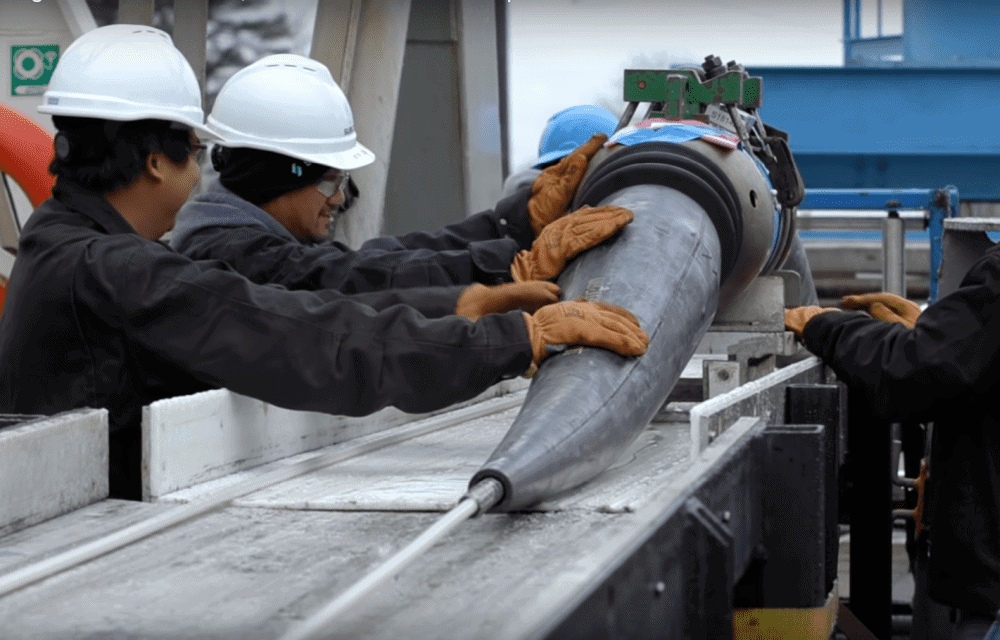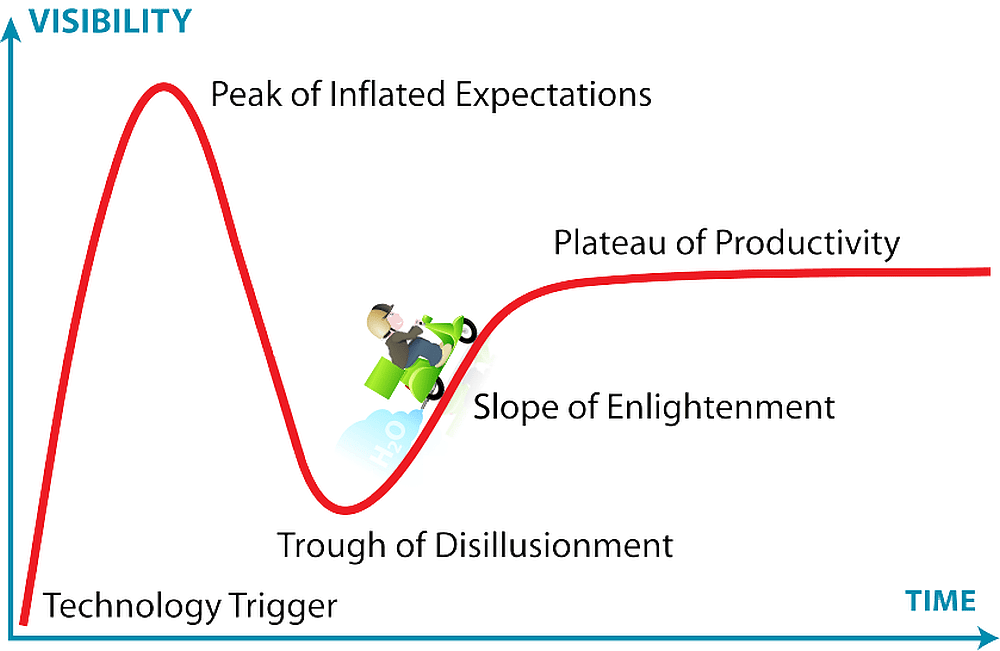
[Image above] Workers position a submarine fiber-optic cable for installation. Concerns that the global submarine cable system may be used to conduct espionage is driving a clash between China and the United States. Credit: CNBC International, YouTube
As participants in this year’s Ocean Race continue their trek around the world, their boats will sail over regions of the ocean that otherwise are rarely traveled. Yet far beneath the waves in some of these remote areas lies a key to modern civilization—the global submarine cable system.
The global submarine cable system consists of fiber-optic cables laid on the ocean floor to carry telecommunication signals between land-based stations. These cables carry about 95% of all global transnational communication data.
As of early 2023, there are 552 active and planned submarine cables connecting all continents except Antarctica. You can see a map of all these cables via the Submarine Cable Map, a free and regularly updated resource offered by telecommunications market research company TeleGeography.
Despite the importance of the global submarine cable system to transnational communications, the system is surprisingly fragile. A CTT post last July described how natural disasters, human error, and outdated regulations can cause the system to fail.
Accidents are not the only threat to the system’s security, however. In recent years, the U.S. government has grown increasingly concerned about the possibility of this network being used to conduct espionage due to the growing prominence of HMN Technologies Co., Ltd. within this industry.
HMN Technologies, previously Huawei Marine Networks Co., Ltd., is a provider of turnkey submarine network solutions. The company was established as a joint venture between China-based Huawei Technologies (51%) and U.K.-based Global Marine Systems Ltd. (49%) in 2008. However, as of 2020, the company is now owned by China-based Hengtong Optic-Electric Co. Ltd. (81%) and New York-based HC2 Holdings, Inc. (19%), the legacy controlling company of Global Marine Group.
When HMN Technologies first entered the submarine cable industry, it started by building small cable systems in Papua New Guinea and the Caribbean. But it soon became the fastest-growing manufacturer and layer of submarine cables.
“Altogether, the company has worked on some 90 projects to build or upgrade seabed fiber-optic links,” The Wall Street Journal reported in March 2019. “The company is now the fourth-biggest player in an industry long dominated by U.S.-based SubCom and Finnish-owned Alcatel Submarine Networks. Japan’s NEC Corp is in third place.”
While most projects are in the developing world, HMN Technologies has led several significant projects between developed nations, including the 7,500-mile “PEACE Cable” connecting Europe, Asia, and Africa.
The growth of HMN Technologies is concerning to the U.S. government because of its previous owner, Huawei Technologies. Those familiar with U.S.–China relations will recognize Huawei as the company repeatedly targeted by U.S. sanctions to prevent it from building 5G communications networks due to hacking fears.
Even though Huawei Technologies divested its stake in HMN Technologies to Hengtong Optic-Electric Co. Ltd. in 2020, U.S. concerns about the company have not abated.
In March 2023, Reuters published a special report revealing the extent to which the U.S. is addressing its concerns. The report details how, over the past four years, the U.S. intervened in at least six public submarine cable deals in the Asia-Pacific region to keep HMN Technologies from winning that business, or forced the rerouting or abandonment of cables that would have directly linked U.S. and Chinese territories.
There is evidence the U.S. campaign is affecting HMN Technologies.
“HMN Tech supplied 18% of the subsea cables to have come online in the last four years, but the Chinese firm is only due to build 7% of cables currently under development worldwide, according to TeleGeography,” the Reuters report states.
How these political maneuverings will affect the global submarine cable system in the long term remains to be seen. But “When we talk about U.S.–China tech competition, when we talk about espionage and the capture of data, submarine cables are involved in every aspect of those rising geopolitical tensions,” says Justin Sherman, a fellow at the Cyber Statecraft Initiative of the Atlantic Council, a Washington-based think tank, in the Reuters report.
The video below by CNBC International provides a deeper look at this ongoing cable clash and the global submarine cable system in general.

Credit: CNBC International, YouTube
Author
Lisa McDonald
CTT Categories
- Market Insights


